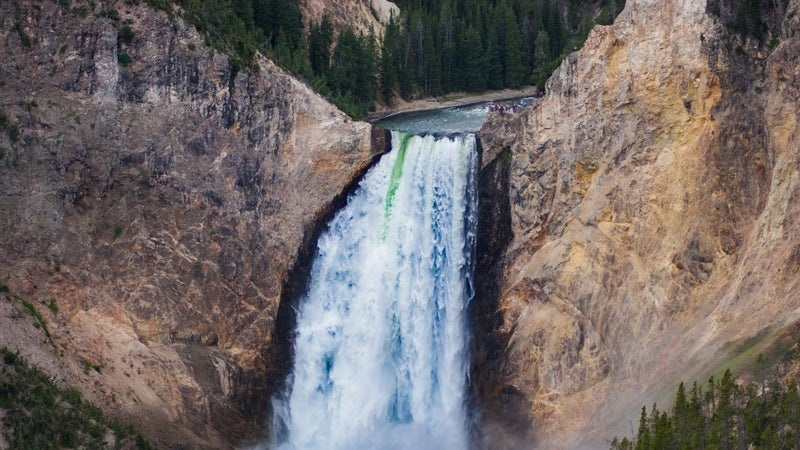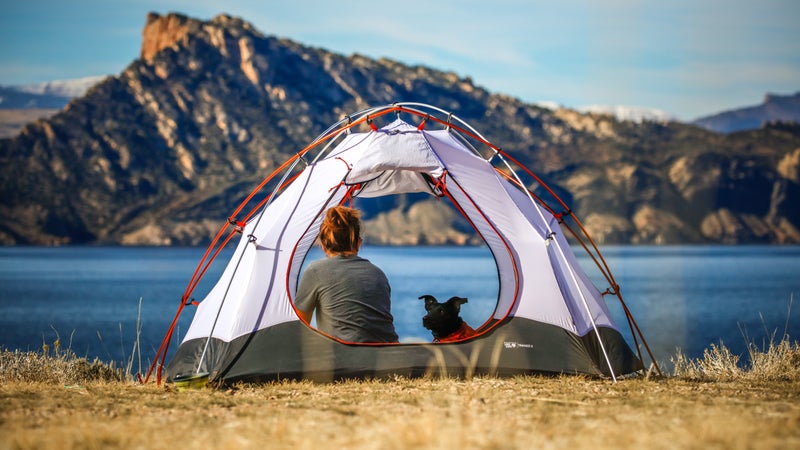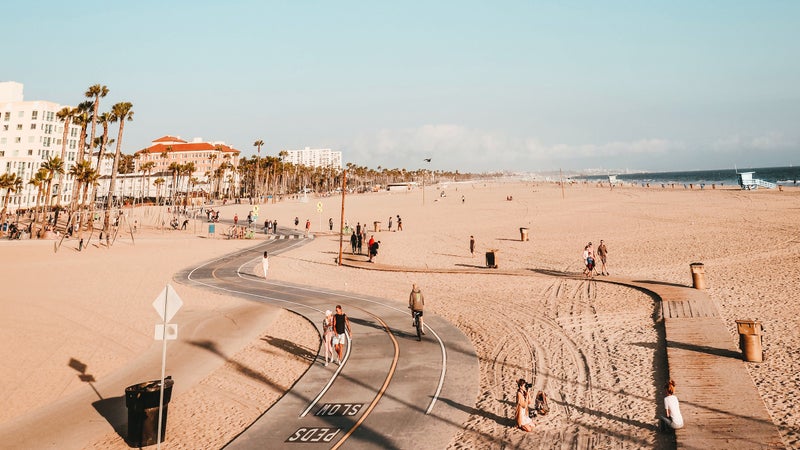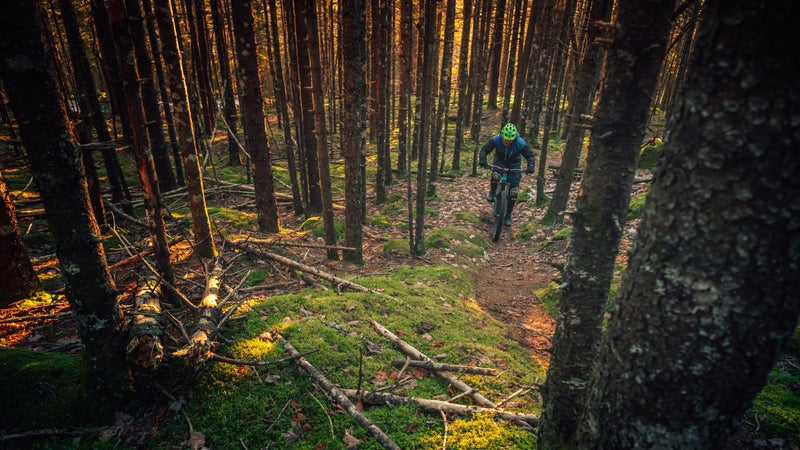This is a developing story. For the latest information on reopenings and recommended protocol, visit the state, park, or individual websites of the places you’re considering.��
The start of summer marked a��turning point for many states. Beaches, parks, and campgrounds across the country have begun��reopening��from COVID-19 lockdowns. But the case-by-case approach has left many of us wondering what exactly is open��and, more importantly, how to get outside without contributing to��a second wave of infections. We scoured dozens of status updates to better provide an overview of where some of our favorite pastimes stand, and we asked William Miller, an epidemiologist at the Ohio State University, how much risk each of the following��activities pose. While there’s no such thing as a risk-free outing right now, being well-informed and making smart decisions can lead to a safer and more active summer.��
Visiting the National Parks

Status:��They’re opening, but not to their full capacity.
As of June 10, more than half of the country’s 62 national-park units have reopened. But much like their earlier��closures, the process for these phased reopenings has��varied from park to park. The first step for most has been experimenting with limiting day use. While Rocky Mountain National Park has instituted since reopening on May 27, others, like , will simply close to new visitors once parking lots are full.��
Along with changes to park entry, expect some of the most popular trails and sites to remain closed, because of concern��over��social distancing in those areas or a lack of access from��shuttle operations��on pause. Some less visited sites have begun to make either all or select campgrounds available, while others, such as those in the Grand Canyon and Pinnacles, are honoring existing reservations but remain closed otherwise. Don’t expect most overnight lodging to be open, but check in with individual vendor sites, as there are exceptions.��
When it comes to backcountry access, the national parks are showing a similar split across the board, with certain places only allowing backcountry access (Congaree and��Rainier), others starting to issue permits (Canyonlands and��Rocky Mountain),��and many canceling permits for the rest of the reason (Glacier). Meanwhile, Yosemite, which welcomed visitors with existing wilderness and Half Dome permits on June 6, is allowing to access its 70 miles of the Pacific Crest Trail.��
Despite these measures, many parks have already reported huge��turnouts. Great Smoky Mountains National Park��saw a surge of visitors on its opening day, some of whom blocking off closed areas. Arches three hours after reopening on May 29 when it reached capacity��and is now looking to enforce a timed-entry system. On May 18, thousands flocked to Yellowstone and Grand Teton, with reporting instances of rangers having to break up large groups near Old Faithful.
As has been the case with states reopening, the parks are currently in an experimental phase and will adapt their measures according to local guidance and in response to visitor behavior. Be sure to check individual parks’ websites for their��latest status, and have a backup plan should your destination hit capacity. Better yet, reach out to park officials and��ask which days of the week or times of the day they��recommend visiting��and the locations they expect to be less crowded.��
Risk Assessment: Medium
Anyone considering a visit to a��national park, even in their��own��state, will likely end up spending some time on the road. “A road trip with your household is probably going to be pretty safe, but you’ll have to plan your route thoughtfully,” says Miller, who suggests skipping restaurants, making sure you’ve packed enough supplies��to avoid stopping in small towns, and camping or staying in hotels where you can trust that accommodations are adequately cleaned.����
Camping

Status: It’s enjoying��a strong comeback, but make a reservation or go off-grid.
In most states, parks and campgrounds have been among the first recreational options to reopen. But expect the status of each site to change, depending on its designation and state ordinances. According to the booking site , as of June 1, a reported��18 states have��park campgrounds that are either closed, off-limits to out-of-state visitors, or planning staggered openings.��Among them is��,��which continues to keep state-park campgrounds closed but is set to reopen camping sites��within soon.��Other states, such as , are requiring campers to make reservations for state parks in advance and running sites at 50 percent capacity. Meanwhile, state parks are just starting to reopen in (June 1) and (June 9), both allowing dispersed camping on BLM land. National-forest sites, those run by third parties, like the Army Corps of Engineers and ,��and RV parks, have followed a similar case-by-case model. For openings by state, the Dyrt has a handy overview of what to expect, but make sure to check with individual state websites for the latest information.��
Risk Assessment: Low
“The great thing about camping is that it is usually in a wide-open space, and you’re there with people you intend to be with,” says Miller. He notes that the only risks would include using restrooms, which are often poorly ventilated, and picking a crowded campground.
Hitting the Beach

Status: You can go—but only if you’re doing something active.
One of the first states to open its beaches, Florida saw hordes of visitors flock its shoreline as early as mid-April, causing some areas, like Naples, to close, reopen, and close again before reopening with . Similar scenes��were seen on the beaches of��, Texas,��and . While Texas hasn’t imposed any COVID-19-related measures, Los Angeles County is only individual activities like swimming, surfing, running, and walking, while sunbathing (and any items that allow for it, like chairs, umbrellas, and coolers) is prohibited to prevent��crowds��or gatherings.��
Across the Southeast, states began lifting restrictions��in mid-May, and now��, , and are open for business. And ahead of Memorial Day, states in both the Northwest (Washington and��Oregon) and the Northeast (New York, New Jersey, Delaware, and Connecticut) began to open up, though New York City’s decision to remain��closed caused the surrounding states to impose both informal and official measures impeding out-of-state access; this has included everything from limiting parking and��short-term rentals to having people buy “”��in advance or restricting out-of-towners altogether.��On June 1, beaches in and began phased reopenings. With so much of the country only just reaching this stage and in the process of closely monitoring any uptick of cases as a result of it, it’s crucial to stay updated.��
Risk Assessment: Low
“I hope that we can trust each other to maintain the necessary spacing without disruptive systems like reservation systems or physical barriers to enforce distancing,” says Miller. As for the risks associated with swimming and surfing, he says, “We don’t have any reason to believe that the virus is transmitted through water so far.”��
Climbing

Status: Gyms are slowly reopening��but may present risks despite new measures. Opt for the outdoors��instead.
As climbing��gyms across the country have begun to reopen, we’ve seen a range of approaches to cleanliness and social distancing. Some are requiring patrons to wear masks, wash their hands, and clean their shoes��before entering the facility, while��others are setting routes farther apart and limiting entry to members only. Most gyms are reducing their capacity to abide by local regulations, suspending gear rentals, and encouraging climbers��to stick with one belayer during sessions. The fact is, holds and ropes are by nature hard to keep clean, and most��gyms are enclosed spaces, which means the indoor version of the sport��presents inherently more risk than outdoor activities.
However, many states��and national parks are starting to allow climbing. Among the national parks, Arches, Black Canyon of the Gunnison, Canyonlands, and Capitol Reef are currently issuing permits; North Cascades and Olympic are open to climbers for day use; and��Mount Rainier is open to dispersed camping and climbing��up to 10,500 feet. Denali and Yosemite are two that remain closed to climbers.��
Risk Assessment��for Outdoor Climbing: Low
“Crags should be fairly low-risk for contact-related transmission, especially if they are in the sunlight. I could imagine the virus surviving on a moist surface, like a mossy area in the shade, but we don’t know that for sure,” says Miller. To minimize risk, make sure your partner has limited exposure to others in the weeks leading up to the climb.
Mountain Biking��

Status:��More people than ever are taking to the trails on two wheels, making it important to follow guidelines.
The pandemic has produced a new class of cyclists, and while most��are considered casual or commuting riders, mountain biking has also enjoyed a surge in popularity, with bike shops and trails that have remained open citing . As state and forest land once again becomes accessible, along with networks on private land, many organizations, including the , and state or city outfits, like the and Colorado’s , have issued recommendations for safe riding. Most call for staying close to home and having a plan B should you find too many cars at the trailhead parking lot. Better yet, the IMBA suggests riding roads, gravel, or paths instead of crowded singletrack.��
Bike parks, meanwhile, have either announced closures for the summer season or tentative opening dates in accordance with local codes, though��a few��have already opened. The website MTBparks has been keeping of areas��across North America, but check in directly with your��destination for the most recent updates.��
Risk Assessment: Low
“Mountain biking—and biking in general—is very safe because it’s easy to maintain a distance. The only potential exposure is taking more than a few seconds to pass someone or riding closely behind them,” says Miller. “If you can be prepared ahead of time to minimize time at the trailhead, all the better.”


